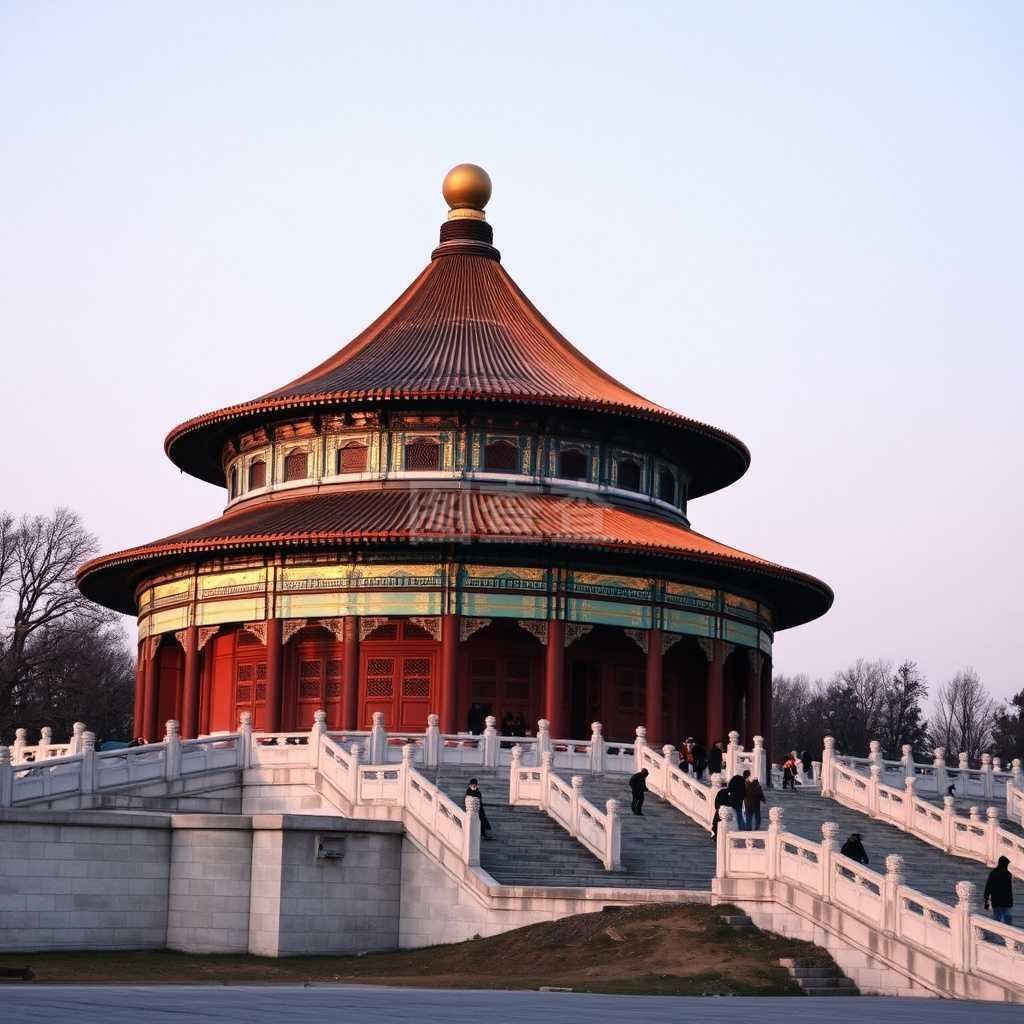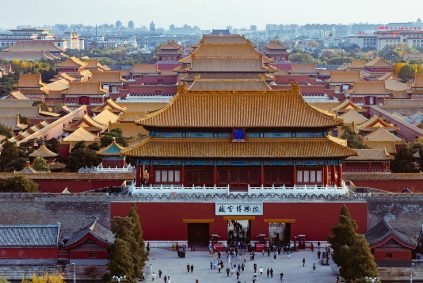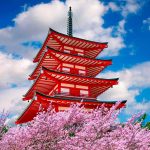The sacrificial cultural attractions in the Temple of Heaven Park are a concentrated manifestation of the solemnity and wisdom of ancient Chinese imperial sacrifices. The following are some of the main sacrificial cultural attractions:
The Hall of Prayer for Good Harvests: As a landmark building of the Temple of Heaven, the Hall of Prayer for Good Harvests was the core venue for emperors of the Ming and Qing dynasties to pray for good harvests in early spring. The grandeur of its three-story circular pyramidal roof and blue-tiled golden roof, as well as the design of 28 golden-threaded nanmu wood columns inside symbolizing the 28 constellations, embody the architectural concept of “harmony between man and nature”. This building is not only the pinnacle of ancient Chinese architecture, but also an important symbol of royal sacrificial culture.
The Circular Mound Altar: The Circular Mound Altar is a sacred place for worshiping Heaven on the Winter Solstice. Its three-layer white marble altar surface conceals the mystery of the number “nine”. Each step, balustrades and floor tiles are arranged in the shape of nine or multiples of nine, symbolizing that “Heaven has nine layers”. The Tianxin Stone at the center of the altar is an acoustic wonder. When a person stands on it and makes a sound, the sound becomes exceptionally loud due to the superposition of reflection, as if reaching the celestial court directly, demonstrating the ancients’ reverence and exploration of heaven and earth.
The Imperial Dome: The Imperial Dome is a hall dedicated to the throne of the Heavenly Emperor. Its circular roof, along with the echo wall and the three-sound stone, together form an acoustic wonder. The soundproof wall, with its smooth and arc-shaped surface, can convey soft voices. The Three-Sound stone enables people to hear three clear echoes. These acoustic wonders not only demonstrate the wisdom of the ancients, but also reflect the pursuit of “correspondence between heaven and man” in royal sacrifices.
The echo wall: As a circular fence of the Imperial universe, the echo wall has a natural reverberation effect. When two people stick to the wall and whisper to each other 60 meters apart, it is as clear as making a phone call. This acoustic phenomenon not only adds a sense of mystery to the sacrificial ceremony, but also becomes a popular tourist attraction for experiencing the charm of ancient technology.
The Zhai Palace: The Zhai Palace was the place where emperors of the Ming and Qing dynasties performed fasting rituals. Due to its strict security and complete regulations, it was called the “Little Imperial Palace”. Both inside and outside the palace city, there are imperial rivers and palace walls for defending against foreign enemies, as well as a long-standing culture of fasting. This place was not only the preparation site for the emperor’s sacrificial ceremonies, but also an important part of the royal sacrificial culture.
The Danbi Bridge: The Danbi Bridge is a 360-meter-long elevated walkway connecting the Circular Mound Altar and the Hall of Prayer for Good Fortune. Its design, which is higher in the north and lower in the south, makes people feel as if they are ascending step by step, as if they were in the celestial realm. The bridge deck is divided into the divine path, the imperial path and the royal path, with a strict hierarchy, which is a microcosm of ancient sacrificial rituals. Tourists strolling on it can feel the solemnity and majesty of ancient royal sacrifices.
















